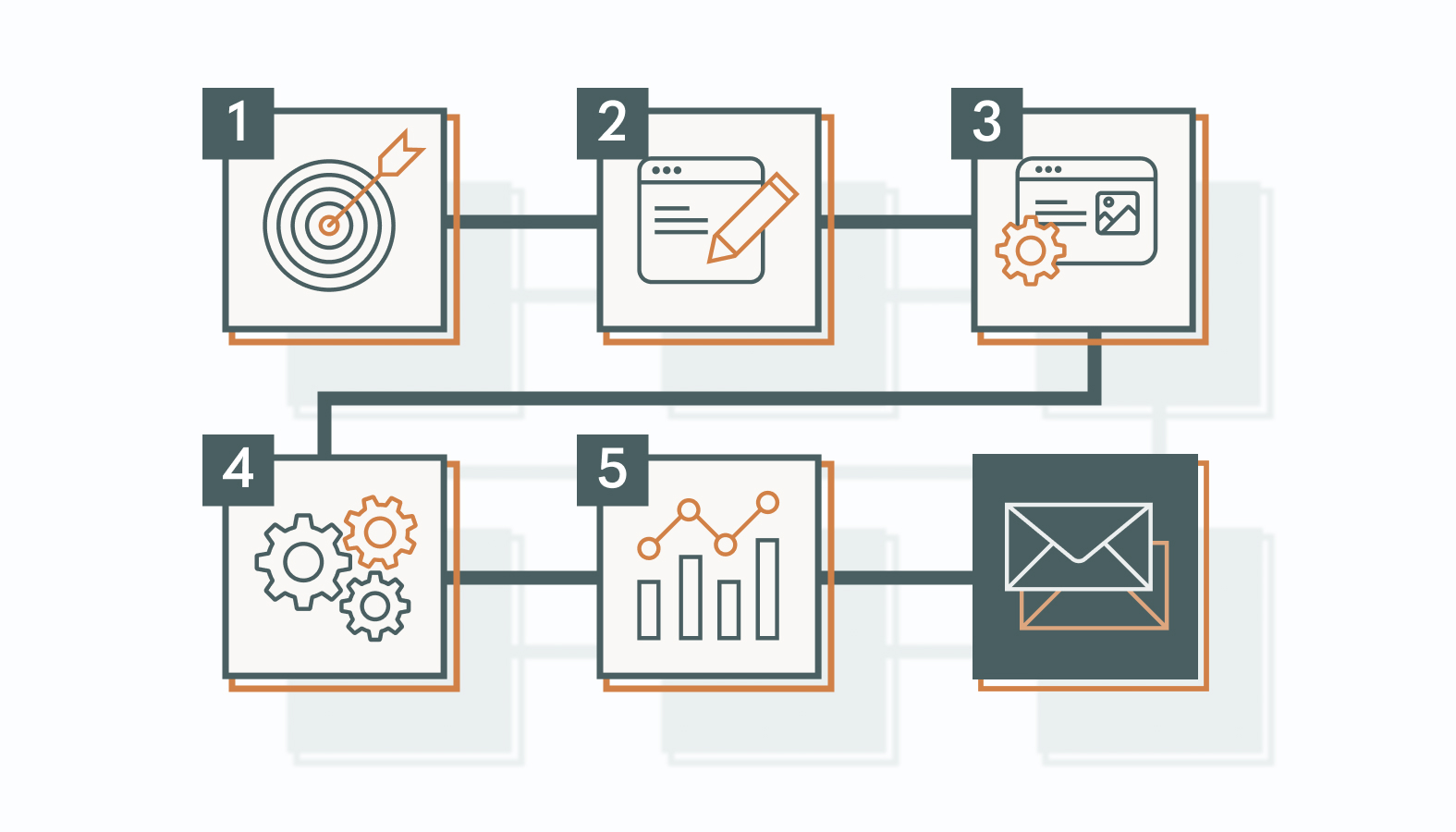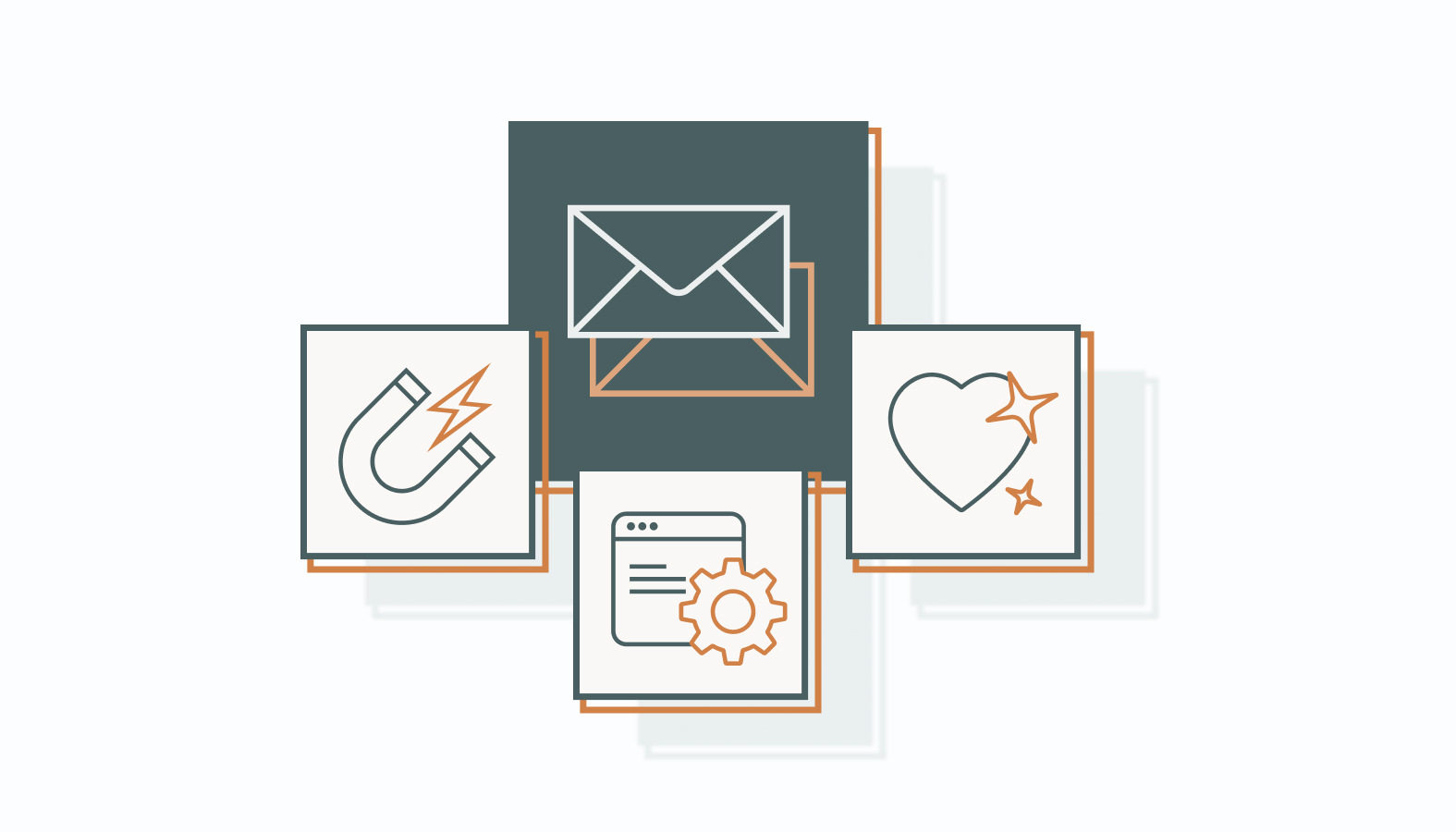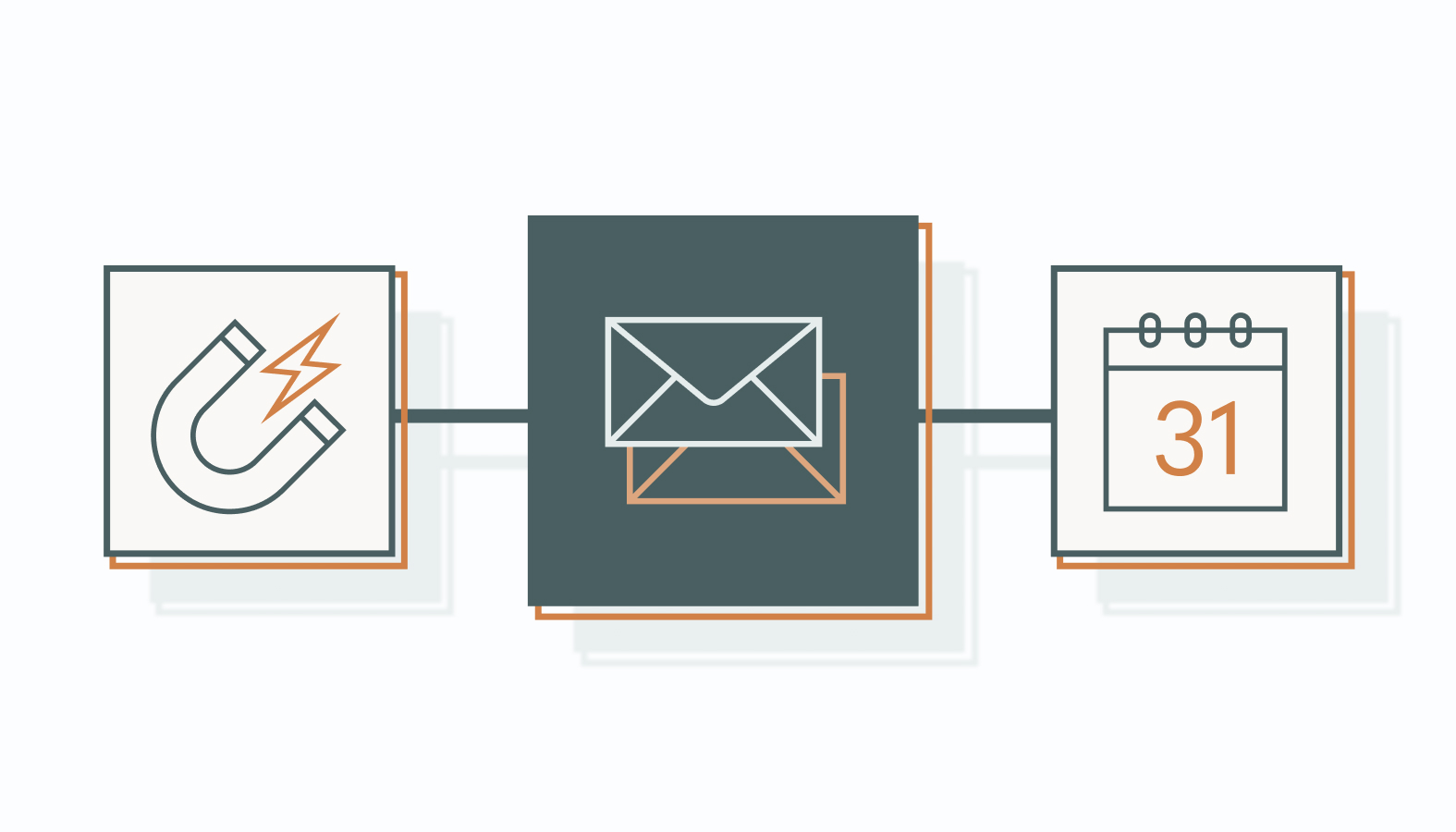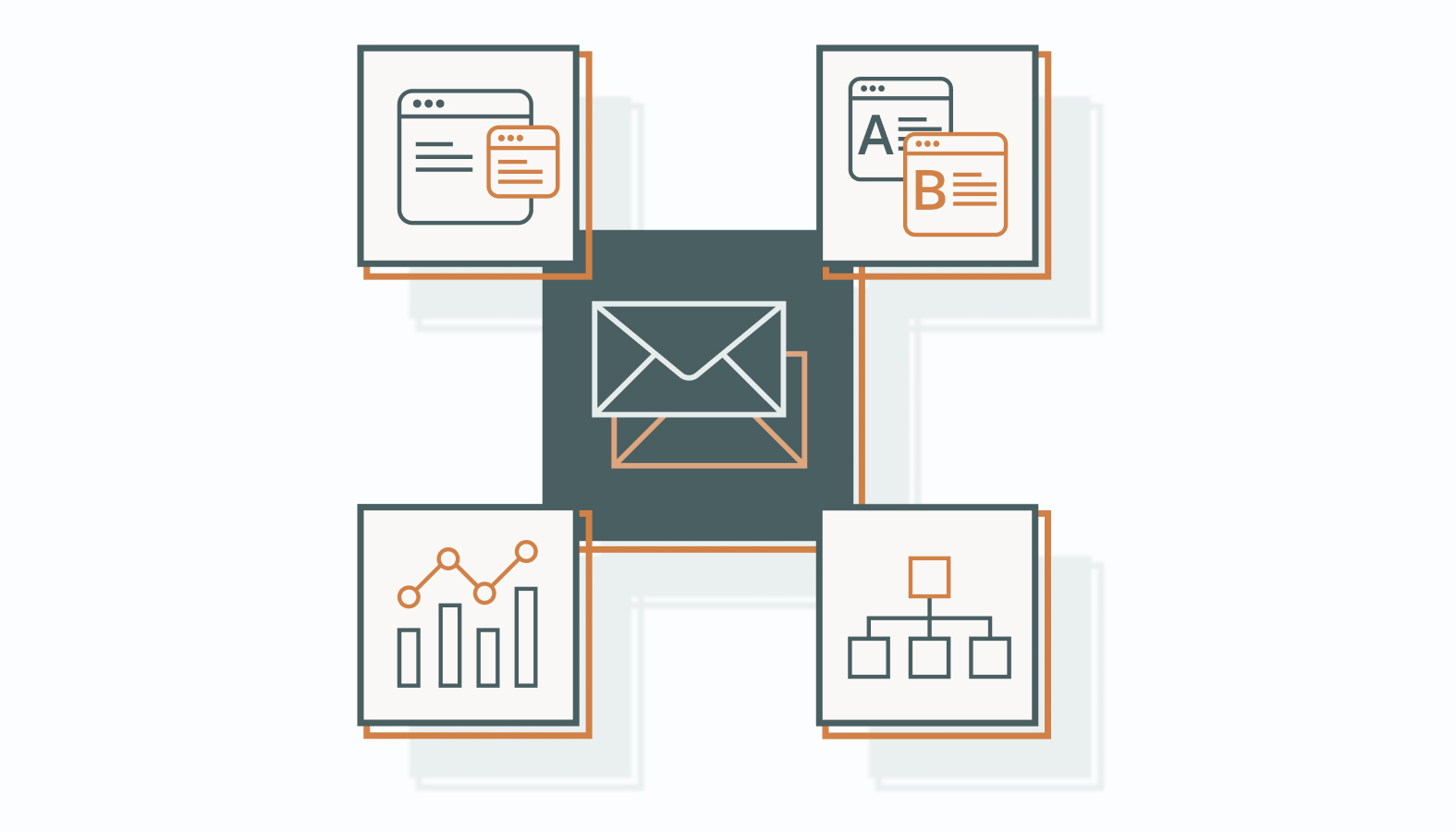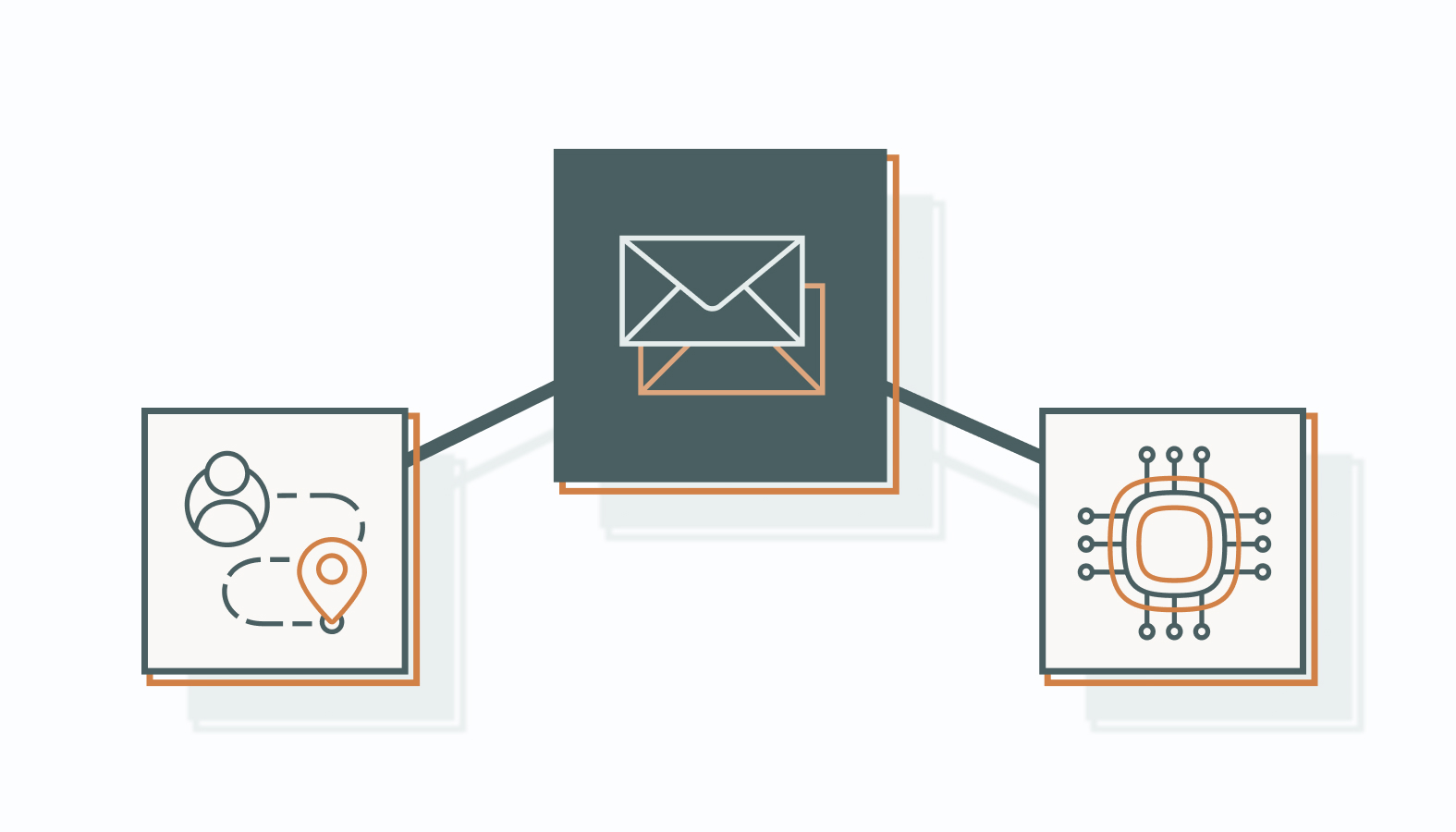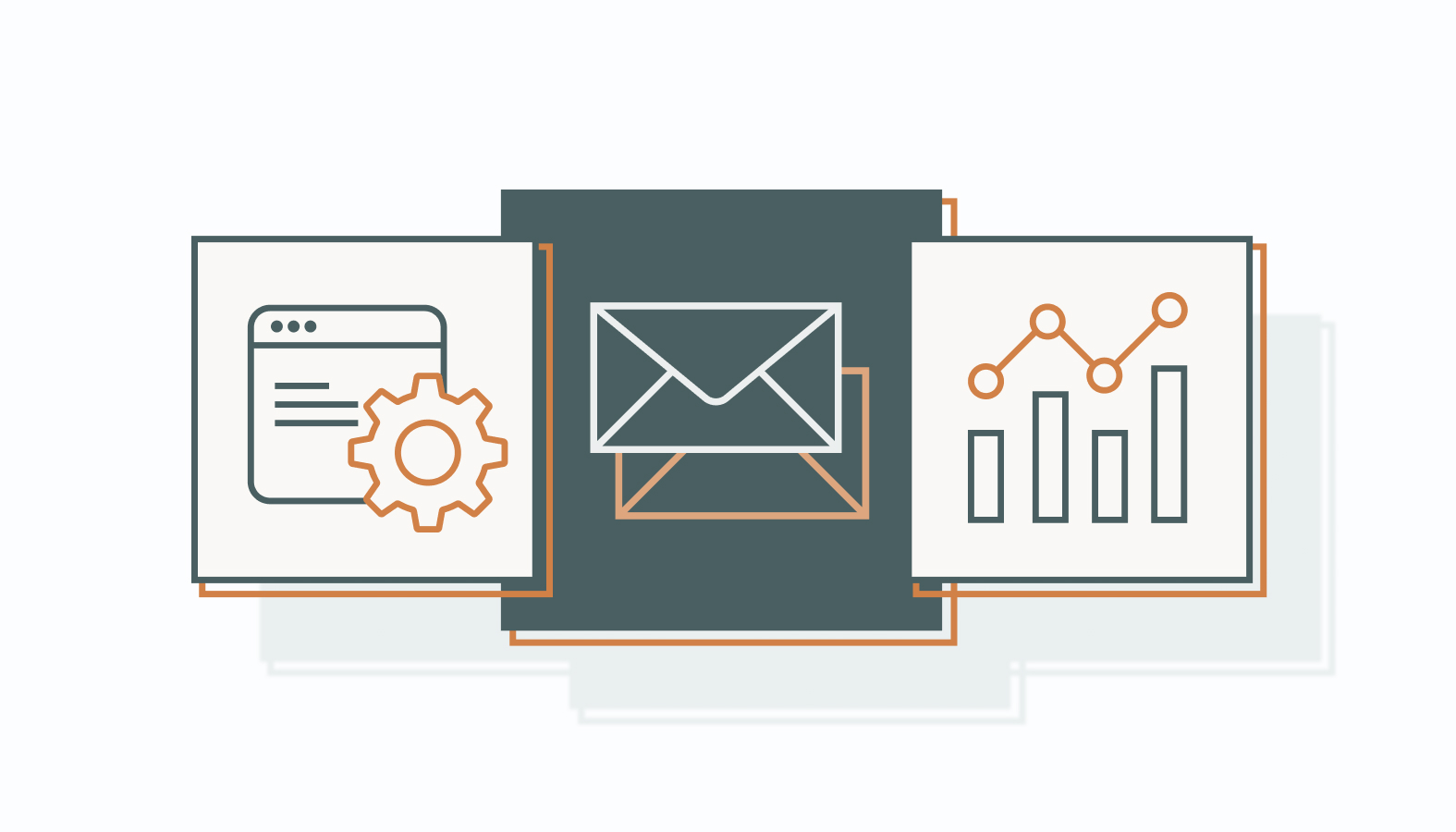If your SaaS email marketing feels stuck in a loop, like relying on reused templates or random sends, you’re not alone. The problem isn’t email itself; it’s the lack of a strategic approach.
Email is more than just a communication tool. When leveraged correctly, it becomes a growth engine that onboards new users, nurtures leads, converts trials, and keeps customers engaged long after sign-up.
But unlocking that potential takes more than effort. It demands a strategy aligned with your audience’s behavior, your product lifecycle, and the right tools to bring it all together.
Tired of average performance? Let’s turn your email marketing into a serious SaaS growth lever.
Essentials of SaaS Email Marketing
SaaS email marketing remains one of the most efficient and cost-effective tools in your growth arsenal. When executed correctly, it strengthens user relationships, boosts retention, and heightens customer lifetime value. Thriving SaaS companies use email not just to convert, but to stay relevant across the customer lifecycle.
Your emails can transform from background noise into business accelerators with a sharp strategy and tactical precision.
Key Elements for SaaS Email Campaign Effectiveness
A high-performing SaaS email strategy is no accident. It’s engineered with the right components, tested often, and built to scale.
Let’s break down the core elements driving results in today’s SaaS landscape.
Audience Segmentation and Personalization
Segmentation makes your emails smarter and more human. It begins with grouping users based on behavior, demographics, and activity levels, then evolves into advanced personalization that speaks to users’ current needs. Done well, this raises engagement and earns trust over time.
Tips for Effective Segmentation:
- Behavioral Segmentation: Target users by their product usage and interaction history.
- Demographic Segmentation: Customize messaging by factors like location, job title, or company size.
- Engagement Level: Reward active users with offers and re-engage dormant ones with helpful content.
Leading SaaS marketers take this further with micro-segmentation. For instance, trigger an upgrade offer when someone hits a usage milestone or deliver in-app support content when a user stalls in the onboarding flow. Emails that appear with perfect timing feel personal, even at scale.
Crafting Compelling Subject Lines
Subject lines do the heavy lifting. They’re the handshake, the headline, the make-or-break moment. A strong subject line piques curiosity, sets the tone, and increases the odds your message will be read.
Here are proven strategies for writing effective subject lines:
- Be Concise: Stick to 6–10 words. Example: “Last Chance: Upgrade Your Plan and Save”
- Add Urgency: Use time-sensitive phrases like “Limited Time” or “Try It Free Today” to drive clicks.
- Get Personal: Include names or relevant context. Example: “Your Exclusive Beta Access, [First Name]”
Structuring Clear and Concise Content
Every word counts. Your reader’s time is limited, so deliver value quickly. Aim for content that flows well, highlights key points, and guides the user effortlessly toward the action you want them to take.
To structure email content effectively,
- Lead with Impact: Open strong to capture attention.
- Emphasize the Value: Use formatting to highlight benefits.
- Finish with Direction: A clear call-to-action (CTA) leaves no confusion about the next step.
Leveraging Automation Tools
The right automation platform doesn’t just save time. It transforms how you deliver relevant, timely communication. Automation enables smart workflows, scalable personalization, and deep insight into user behavior.
If used correctly, automation lets teams:
- Work Smarter: Eliminate repetitive tasks so you can focus on strategy.
- Personalize at Scale: Dynamic content adapts to each user’s context.
- Measure What Matters: Track key metrics and iterate based on data.
Ensuring Responsive Email Design
Your email must perform across screens. If it loads poorly or looks broken on mobile, you’ve already lost. Responsive design ensures your message stays sharp and functional across devices and email clients.
Before you begin sending emails and building email drip campaigns, ensure to:
- Design Mobile-First: Most users check their email on phones. Start there.
- Test Across Devices: Verify layout and links work everywhere.
- Optimize Images: Use responsive image sizing to preserve quality.
Designing Strong Calls-to-Action
The CTA is where strategy meets execution. It should draw the eye, invite action, and close the loop on your message. A good CTA makes it easy for the reader to take the next step.
How to Make CTAs More Effective:
- Use Clear Language: “Start Your Trial” or “Book a Demo” works better than vague prompts.
- Make it Pop: Contrast colors, bold fonts, and strategic placement drive attention.
- Keep Focused: One primary CTA per message avoids distraction and confusion.
In SaaS, attention is earned. Email gives you a direct line to prove why your product matters — one well-crafted message at a time. Master these fundamentals, and your email program will become a predictable source of engagement, conversion, and customer retention.
Email Templates and Drip Campaigns for SaaS
Email automation is the engine that powers scalable, personalized communication in SaaS.
From onboarding to renewal, well-structured drip campaigns and modular templates ensure your messages are timely, relevant, and on-brand without reinventing the wheel each time.
Plug-and-Play Templates for Every SaaS Scenario
Equip your marketing and customer success teams with flexible templates that align with key lifecycle stages:
- Welcome Email: Warm intro with clear next steps and helpful resources
- Trial Expiration Reminder: Urgent, benefit-focused copy with an upgrade call-to-action
- Feature Update Announcement: Spotlight improvements with concise value messaging
- Re-Engagement Prompt: Friendly tone paired with a compelling incentive to return
- Renewal Reminder: Reinforce usage value and provide a seamless path to renew
These templates save time and ensure consistent voice and visual standards across campaigns.
Drip Campaigns That Drive SaaS Growth
Drip campaigns are email sequences designed as strategic touchpoints to move users forward. Each campaign serves a distinct goal, triggered by the user’s current journey.
- Lead Nurturing Drips: Introduce new subscribers to your product, build trust through educational or social-proof content, and create momentum toward conversion.
- Onboarding Drips: Guide users through initial setup, feature discovery, and key engagement milestones. The goal is to reduce friction and accelerate time-to-value.
- Upsell & Cross-Sell Drips: Surface relevant premium features or add-ons based on usage patterns. Highlight clear benefits, share customer stories, and offer a frictionless upgrade path.
- Churn Prevention Drips: When activity drops off, re-engage users with personalized reminders, usage insights, or special offers. The tone here should be supportive (not salesy) to rebuild interest.
Each drip type supports a different phase of the SaaS lifecycle, but all should feel timely, useful, and native to the user’s experience. Well-executed campaigns anticipate behavior and provide just enough value to earn the next click.
How to Build a High-Impact SaaS Email Marketing Plan
A high-performing SaaS email strategy is engineered intentionally and precisely by aligning your objectives with real buyer needs, smart automation, and data-driven refinement.
Here’s how to craft a plan built on strategy:
1) Define Clear Objectives and Goals
Every successful SaaS email strategy starts with clarity. Vague goals create vague outcomes. Meanwhile, specific, measurable objectives give your team direction and a scoreboard.
SaaS Teams should aim to:
- Improve Conversion Rates: Set benchmarks for how many free trial users you want to convert to paid, and when.
- Boost Engagement: Define realistic open and click-through targets based on user behavior patterns.
- Lower Churn: Monitor unsubscribes and downgrades, and aim to reduce them with targeted lifecycle messaging.
2) Develop Email Content for Different Roles in Buying Committees
In B2B SaaS, you’re not emailing a person but influencing a process. That process usually involves multiple decision-makers with different concerns. One-size-fits-all messaging won’t cut it. Tailor your email content to speak directly to the priorities of each key role.
End Users: They care about ease of use and efficiency. Show them how your product makes their day smoother. Focus on:
- Feature walkthroughs that simplify their tasks
- UI tips that cut down friction
- Workflow hacks they’ll actually use
Managers: Middle managers want tools that deliver measurable impact. Highlight efficiency gains, reporting tools, and productivity metrics. Focus on:
- Performance dashboard insights
- KPI tracking and reporting benefits
- Case studies showing department-level wins
Executives: This audience sees the bigger picture. They consider business outcomes, cost efficiency, and long-term scalability. Focus on:
- Product’s role in hitting business goals
- Cost-saving and operational scaling potential
- Industry recognition or third-party validations
3) Create Emails That Look Good and Work Hard
Substance gets attention, but presentation keeps it. Your content must be relevant, valuable, and cleanly designed across every device.
Here are some top email design tips:
- Value First: Lead with what matters most to your audience—solve their pain, not just state your features.
- Polished Design: Use brand-consistent colors, high-res visuals, and layout spacing that makes reading easy.
- Responsive Formatting: Test across devices. If it’s not mobile-friendly, it’s not usable.
4) Use Automation and Personalization to Scale Smart
Marketing automation isn’t just a multiplier. Combine automation with intelligent personalization to create experiences that feel tailored, not templated.
Here’s what smart automation could look like:
- Trigger-Based Workflows: Onboarding, trial expiration, and upsell opportunities are automated but timely.
- Dynamic Content: Customize sections based on user behavior, segment, or stage in the funnel.
- Behavior-Driven Messaging: Speak to the actions your users take (or don’t take) with precision.
5) Optimize with Testing, Analytics, and Compliance
No email strategy is perfect out of the gate. The best ones evolve. That means testing, optimizing, and staying on the right side of privacy regulations.
Sharpen Your Strategy With:
- A/B Testing: Subject lines, CTAs, layout, tone—test them all. Then double down on what works.
- Analytics: Track KPIs that align with each goal. Don’t just measure opens. Measure movement.
- Compliance: Respect GDPR, CAN-SPAM, and user trust. Clear opt-ins, honest messaging, and easy unsubscribes aren’t optional.
A standout SaaS email marketing plan is part science, part storytelling, and entirely intentional. It clearly guides your prospects through their journey, delivers value at every step, and fuels lasting growth. When built correctly, email will support and accelerate your sales engine.
Effective SaaS Email Campaign Structures
There’s an art to building email campaigns that drive tangible results. In SaaS, where customer relationships are built over time, the structure of your campaigns matters. It’s not just what you say, but when, why, and to whom.
The smartest campaigns map directly to the customer journey, aligning every message with specific business goals and user needs.
Lifecycle Email Campaigns to Guide Users
Lifecycle email campaigns are purpose-built to guide users through each phase of their relationship with your product. From onboarding to renewal, these emails serve as helpful nudges that educate, engage, and retain.
Onboarding Sequences: First Impressions at Scale
The onboarding sequence is your first real shot at building product momentum. It sets expectations, delivers early value, and lays the foundation for long-term engagement.
Core components of an effective onboarding sequence:
- Welcome Messages: Establish brand tone, set the stage, and make new users feel like they made the right call.
- Product Tours: Highlight core features and eliminate early confusion with guided walkthroughs.
- Feature-Focused Emails: Introduce key tools one at a time, showing users exactly how to put them to work.
Trial Expirations and Subscription Renewals
Trial periods and subscription renewals are pivotal conversion points. Treat them like mission-critical moments, not afterthoughts. The right email at the right time can mean the difference between a lifelong customer and a missed opportunity.
Tactics that keep the momentum going:
- Personalized Offers: Tailor incentives to user behavior or product usage to maximize conversion potential.
- Timely Reminders: Countdown-style emails build urgency without feeling pushy.
- Value-Based Renewals: Use retention emails to reinforce benefits and show users the ROI they’ve already experienced.
Loyalty and Winback: Keep the Right People Coming Back
Customer retention is where real SaaS profitability lives. It’s cheaper than acquisition and should be your top priority. Loyalty and winback emails re-engage customers by reminding them why they chose you in the first place.
- Exclusive Rewards: Surprise long-term customers with perks, early access, or feature previews.
- Winback Campaigns: Reach out to inactive users with personalized messages, special offers, or a simple “we noticed you’ve been away” prompt. Include a feedback loop to uncover what went wrong and how to fix it.
Retention Emails: Turning Customers Into Advocates
Email is one of your most potent tools for retention. Once someone becomes a customer, the real work begins. Strategic, well-timed emails can drive product adoption, reduce churn, and turn loyal users into brand advocates.
Instead of going quiet after conversion, keep users engaged with content that helps them succeed, including:
- Customer Success Stories: Real-life results build credibility and inspire action.
- Pro Tips and Best Practices: Help users unlock value they might have missed.
- Loyalty Incentives: Keep delight levels high with well-timed thank-yous or unexpected gifts.
- Satisfaction Surveys: Let customers know you’re listening and show them what you’re doing with the feedback.
The playbook here is simple: deliver value, consistently and clearly. Make users feel seen, supported, and appreciated. That’s how you go from transactional relationships to loyal advocates who refer others.
Proven Ways to Drive Engagement with Marketing Email Campaigns
Marketing email campaigns are powerful tools for keeping your audience informed and engaged with your SaaS brand. They help nurture leads and maintain customer interest over time.
Lead Nurturing
Lead nurturing is your chance to build trust with prospects before the hard pitch. These emails create value, answer key questions, and guide decision-making over time.
Effective lead nurturing emails focus on:
- Pain Point Alignment: Talk directly to the real challenges your users face. Relevance is everything.
- Educational Assets: Share case studies, guides, whitepapers, bite-sized tutorials, and other types of content that inform.
Event Promotions and Newsletters
Your newsletter is a platform to share insights, spark interest, and drive attendance or downloads when the timing is right. It keeps your brand in the conversation.
When using this email, make sure to incorporate:
- Clear Event Details: For webinars, product demos, or conferences, spell out the value of attending.
- Content-Rich Newsletters: Use updates to share industry trends, product improvements, and meaningful stories from your customer community.
When your email structure reflects how your customers experience your product, every campaign becomes a strategic asset. The right sequence at the right time builds trust, increases activation, and fuels long-term growth.
Boosting the Efficiency of SaaS Email Marketing
In the fast-paced world of SaaS, email marketing isn’t something you “set and forget.” It’s a dynamic engine that demands regular tuning to stay sharp, relevant, and results-driven.
Efficient email strategy combines smart technology, clean data, and sharp execution to meet evolving customer expectations and outpace the competition.
Optimize Deliverability
You can write the most persuasive subject line, craft flawless copy, and segment your list to perfection, but none of that matters if your emails aren’t making it to the inbox.
Deliverability is one of the most undervalued metrics in SaaS email marketing. When neglected, it quietly drags down every campaign. Protecting your sender reputation, maintaining clean lists, and setting up authentication protocols (SPF, DKIM, DMARC) are non-negotiable. Remove inactive users regularly, and monitor deliverability health like it’s your CRM’s uptime.
Because if a third of your emails are flagged as spam, A/B testing becomes meaningless. For long-term success, prioritize list hygiene and reputation monitoring.
A/B Testing: The Feedback Loop Your Campaigns Deserve
Guessing is for gamblers. SaaS marketers operate on evidence.
A/B testing provides clarity, giving your team complex data on what resonates and what gets ignored. Here’s how to run it right:
- Define a Test Variable: Start with one: subject line, CTA, or header image. Don’t test everything at once.
- Create Two Versions: Make your changes deliberate and measurable.
- Split Your Sample Group: Randomize it. Keep your test fair.
- Deploy and Observe: Let the data come in. Watch open rates, click-throughs, and downstream actions.
- Review and Decide: Pick a winner based on performance, not preference.
- Apply Learnings: Use those insights to level up future sends.
Testing is more than a checkbox. It’s the R&D lab for your messaging strategy.
Analytics and The Metrics That Matter
Data doesn’t lie, but it needs to be interpreted with purpose. These are the metrics that should be guiding your email strategy:
- Open Rate: Evaluates subject line strength and send timing.
- Click-Through Rate (CTR): Measures how well your content earns attention.
- Conversion Rate: Tells you if your email drove action or just curiosity.
The right tools make all the difference. Use platforms like HubSpot, Mailchimp, or Klaviyo, paired with Google Analytics for campaign-level tracking. Heat maps can also uncover behavioral patterns and engagement hotspots inside the email itself.
Internal Workflows & Team Collaboration
Automation gets the attention, but your internal workflows keep the engine running smoothly.
Even the most powerful platforms can’t compensate for miscommunication, misalignment, or bottlenecks. High-performing SaaS teams have one thing in common: operational clarity.
Here’s how they stay on track:
- Shared Campaign Calendars: Everyone knows what’s going out, when, and why.
- Defined Roles: Ownership is specifically assigned across content, design, QA, and deployment.
- Version Control: Avoid cluttered inboxes. Manage feedback using tools like Asana, Notion, or Figma.
- Post-Campaign Reviews: Regular retrospectives aren’t optional. They drive iteration, highlight wins, and fix weak points.
Process isn’t bureaucracy. It’s how teams scale email programs without burning out, dropping balls, or missing opportunities.
In SaaS, your email channel is a performance channel. Treat it with the strategic rigor it deserves, and it’ll pay dividends in engagement, conversion, and lifetime value.
Advanced Strategies to Unlock Email Potential
Keeping up with new technology helps you get more out of your email marketing.
Strategies like behavioral targeting, AI, and machine learning open fresh ways to engage and personalize your messages.
What is Behavioral Targeting and How to Use It
Behavioral targeting uses data from user interactions to tailor emails more effectively. Businesses can send highly relevant communications by understanding browsing history and past interactions.
Examples of Behavioral Triggers:
- Abandoned Cart Emails: Remind users of products left in their cart to encourage purchase completion.
- Follow-Up Messages: Send after a user engages with a particular feature or content piece.
These automated sequences enhance user experience and drive engagement by addressing specific user actions.
How to Use AI and Machine Learning in Email Marketing
Incorporating AI and machine learning into email marketing can revolutionize personalization and efficiency. These technologies offer several benefits:
- Predicting User Behavior: AI can analyze patterns to anticipate user needs and preferences.
- Automating Personalization: Machine learning enables dynamic content adjustments based on real-time data.
Practical Applications:
- Optimizing Send Times: AI determines the best times to send emails for improved open rates.
- Content Recommendations: Personalized content suggestions based on past user behavior boost relevance and engagement.
By harnessing these advanced strategies, SaaS companies can transform their email marketing efforts, leading to more personalized, efficient, and impactful campaigns.
Essential Tools and Resources to Level Up Your SaaS Email Marketing
The right tools help you unlock new levels of precision, efficiency, and performance.
Whether refining a high-volume campaign or personalizing onboarding sequences, your software stack should work as hard as you do.
Selecting the Right Email Marketing Platform
Your platform is a strategic partner that either amplifies your goals or holds you back.
Let’s break down the platforms and resources that power strategic SaaS email marketing from end to end.
Mailchimp
Mailchimp has earned its reputation for blending simplicity with power. It offers a solid foundation for teams that want clean design, automation, and intelligent segmentation without a steep learning curve.
- Drag-and-Drop Editor: Quickly build polished emails with customizable blocks.
- Automation: Set up behavioral triggers that respond in real time.
- Segmentation: Target audiences based on preferences, activity, or lifecycle stage.
Small businesses rely on Mailchimp’s affordable plans to grow their lists and automate their outreach. Ecommerce brands integrate it with their storefronts to send personalized product recommendations and abandoned cart nudges.
SendinBlue
SendinBlue stands out for its advanced automation engine and transactional email capabilities. It’s built for teams that want to go deeper with personalization and maintain strong deliverability at scale.
- Transactional Emails: Send real-time confirmations, alerts, and updates with reliable delivery.
- Workflow Automation: Customize complex journeys across multiple touchpoints.
Users report increased engagement rates due to the platform’s flexible personalization.
HubSpot
HubSpot does more than email. It syncs your marketing, sales, and CRM into one system, allowing you to deliver consistent, context-rich communication across the entire customer lifecycle.
- CRM Integration: Every customer interaction is tracked and stored, powering smarter campaigns.
- Marketing Automation: Design flows that nurture leads, qualify contacts, and drive conversions.
High-performing teams gain operational efficiency by reducing manual tasks and unifying data. They also get higher engagement with personalized content built around real-time customer behavior.
Using Analytics and Reporting to Drive Strategy
Effective email marketing requires more than intuition. You need to know what’s working, what’s lagging, and where the next opportunity lies. That’s where analytics and visualization tools come in.
Google Analytics
Google Analytics remains a go-to tool for tying email metrics to business outcomes. It helps you close the loop between campaign activity and customer behavior.
- Track Key Metrics: Monitor open rates, click-throughs, bounce rates, and conversions.
- Optimize Strategy: Use insights to fine-tune messaging, timing, and segmentation.
Businesses use Google Analytics for conversion tracking (determining which campaigns directly influence revenue) and behavioral data assessment (discovering how users interact after the click), which informs future content decisions.
Tableau for Data Visualization
When your data gets complex, Tableau makes it actionable. It turns raw numbers into dashboards that help teams spot trends and pivot quickly.
- Data Visualization: Build interactive views that highlight performance patterns.
- Decision Support: Blend data from multiple channels to inform campaign adjustments and growth strategies.
Businesses use Tableau for trend analysis to help forecast demand and proactively shape marketing calendars. The real-time dashboards also give teams a shared view of performance, aligning everyone around what matters most.
By stacking your toolkit with these proven platforms and analytics resources, you create a system that sharpens all your email campaigns. With the right setup, SaaS companies can execute faster, learn continuously, and build stronger relationships with every message sent.
Future-Proof Your SaaS Email Strategy
The rules of SaaS email marketing are changing fast. With the right strategy and tools, you’re not just keeping up—you’re pulling ahead. Here’s a quick recap of what matters most:
- Strategy comes first. Your goals and messaging need to align with your bigger business picture.
- Know who you’re talking to. Smart segmentation and accurate personas drive relevance and results.
- Design for impact. Great content means nothing if the experience doesn’t hold attention or scale across devices.
- Automate with purpose. Personalization and automation should feel natural, not robotic.
- Let data steer the ship. Testing and analytics aren’t just nice to have—they’re your competitive edge.
- Lean into tech. AI, machine learning, and behavioral tools aren’t futuristic but foundational.
- Use the right stack. The best platforms make your efforts scalable, measurable, and easier to optimize.
Build on these essentials, and your email program will lead. The brands that adapt fastest win more attention, earn more trust, and grow faster. That can be you.
Ready to Grow? Let’s Chat About Your Email Wins
You’ve got the roadmap. Now, it’s time to execute with focus and a partner who gets it.
Whether you’re refining what’s already working or starting fresh, we’re here to help you push your SaaS email strategy forward. No fluff. Just a smart, real conversation about what’s possible for your business and how to get there faster.
Schedule a candid conversation with one of our experts — zero pressure, all strategy. Let’s talk about what email success looks like for you, and how to get there, step by step.

